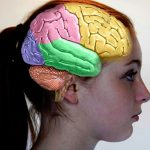Do CGRP Migraine Treatments Work Differently for Men and Women?

Migraines are a type of headache disorder that can affect both men and women, although they are more commonly reported by women. Migraines are characterized by severe, throbbing head pain often accompanied by other symptoms such as nausea, vomiting, and sensitivity to light and sound. They can be extremely debilitating and have a significant impact on a person’s quality of life.
While migraines are more prevalent in women, they can and do occur in men as well. However, there may be some differences in how migraines present in men compared to women:
1. Frequency: Men tend to experience migraines less frequently than women. Migraine prevalence is higher in women, especially during their reproductive years, which suggests that hormonal factors may play a role.
2. Symptoms: The symptoms of migraines in men are generally similar to those in women. These can include a pulsating or throbbing headache, often on one side of the head, along with nausea, vomiting, and sensitivity to light and sound.
3. Triggers: Migraine triggers can vary from person to person, but common triggers for both men and women can include stress, certain foods, lack of sleep, and hormonal changes. Men might be more prone to certain triggers, like alcohol or certain physical activities.
4. Treatment: Migraines are typically treated with a combination of lifestyle modifications and medications. The choice of medication may vary depending on the individual’s symptoms and medical history.
5. Management: Managing migraines often involves identifying triggers, keeping a headache diary, and finding ways to reduce stress. Lifestyle modifications such as regular sleep patterns, a balanced diet, and staying hydrated can also help.
While migraines may be less common in men compared to women, they can still be a significant health concern for those who experience them. In this article, we shall be looking at CGRP drugs and migraine in men and women.
What are CGRP drugs?
CGRP drugs, also known as calcitonin gene-related peptide drugs, are a class of medications used in the treatment of migraine headaches. CGRP is a neurotransmitter that plays a significant role in the development and transmission of migraine pain. These drugs work by blocking the effects of CGRP or its receptor to help prevent and reduce the frequency and severity of migraine attacks. There are two main types of CGRP drugs:
1. CGRP Receptor Antagonists (Gepants): These drugs block the CGRP receptor, preventing CGRP from binding to it. By doing so, they reduce the dilation of blood vessels in the brain and decrease inflammation, which are processes believed to contribute to migraine pain. Some examples of CGRP receptor antagonists include:
• Ubrogepant (Ubrelvy)
• Rimegepant (Nurtec ODT)
• Atogepant
2. CGRP Monoclonal Antibodies (MABs): These medications are antibodies that target CGRP itself. They bind to CGRP molecules in the blood, preventing them from reaching and affecting their target receptors. CGRP monoclonal antibodies are usually given by injection once a month or once every three months, depending on the specific drug. Examples of CGRP monoclonal antibodies include:
• Erenumab (Aimovig)
• Fremanezumab (Ajovy)
• Galcanezumab (Emgality)
• Eptinezumab (Vyepti)
CGRP drugs are typically prescribed to individuals who suffer from frequent and severe migraine attacks that do not respond well to other treatments or preventive medications. They offer a new approach to migraine management by directly targeting the underlying mechanisms of migraine pain, and they have been shown to be effective in reducing the frequency and severity of migraine attacks in many patients.
Do CGRP Migraine Treatments Work Differently for Men and Women?
The debate surrounding the efficacy of CGRP-based migraine therapies in men versus women highlights important considerations in the field of migraine research and clinical practice.
1. Scientific and Medical Interpretations: The argument initially presented by Frank Porreca and David W. Dodick In their article, which was published in JAMA Neurology is based on preclinical and limited clinical data suggesting potential differences in how CGRP-based therapies affect men and women. They point to observations in animal studies and some human trials that indicate varying responses to these treatments.
2. Limitations of Existing Data: Critics like Tim Jürgens argue that the available data are insufficient to draw definitive conclusions about the efficacy of CGRP-based therapies in men. They note that the studies were not designed to specifically investigate gender differences, and therefore, making broad claims about the effectiveness of these treatments in men may be premature.
3. Clinical Implications: One of the central points of contention is whether male patients with migraines should be informed differently about these therapies based on the current data. Porreca and Dodick suggest that men should be informed about the existing evidence, while Jürgens believes that doing so could inadvertently create a nocebo effect, where patients experience negative outcomes due to negative expectations.
4. Placebo Effects: Jürgens also raises the concern that CGRP-based therapies, like many other treatments, can lead to placebo-like side effects. Informing men about potentially lower efficacy could influence their perception of the treatment, potentially reducing its effectiveness.
5. Need for Further Research: Both sides agree on the need for more targeted research to investigate the response to CGRP-based therapies in men. Conducting well-designed clinical studies that specifically analyze gender differences could provide more conclusive evidence.
6. Current Clinical Practice: Jürgens emphasizes that, at present, there is no compelling reason to change medical practice regarding the use of CGRP-based therapies for men with migraines. These therapies have shown efficacy in some individuals, and there are no substantial safety concerns. Other new therapies like psilocybin in magic mushrooms are also being investigated as possible treatments for migraines.
In summary, the debate underscores the complexities of migraine research and the challenges in translating scientific findings into clinical practice. While there may be indications that CGRP-based therapies have different effects in men and women, the current evidence is not robust enough to make definitive claims. As further research is conducted, healthcare providers will continue to evaluate the most appropriate treatment options for each patient, regardless of their gender, to provide the best care for migraine sufferers.





